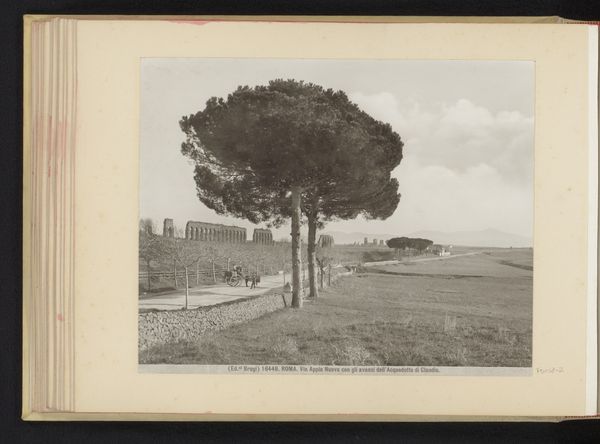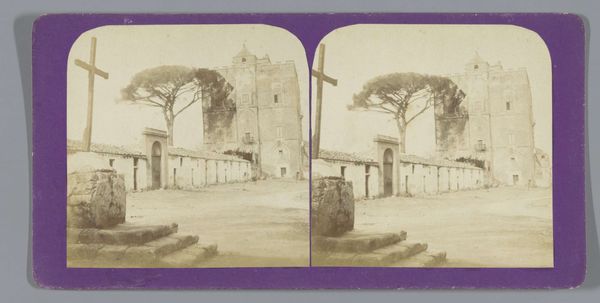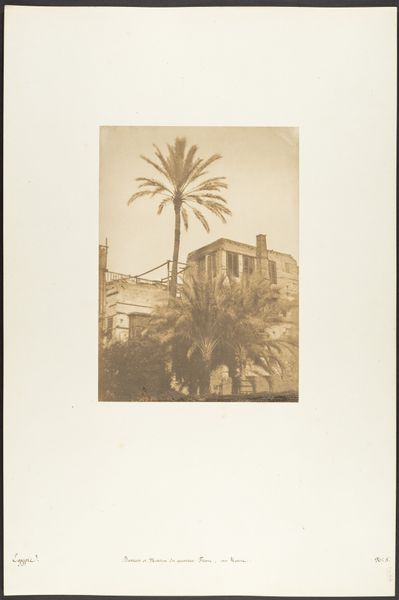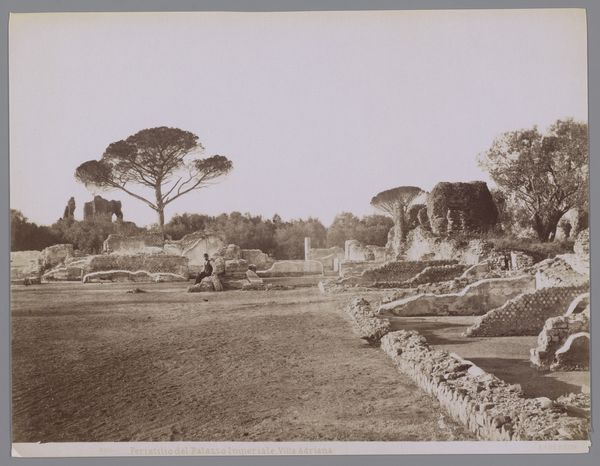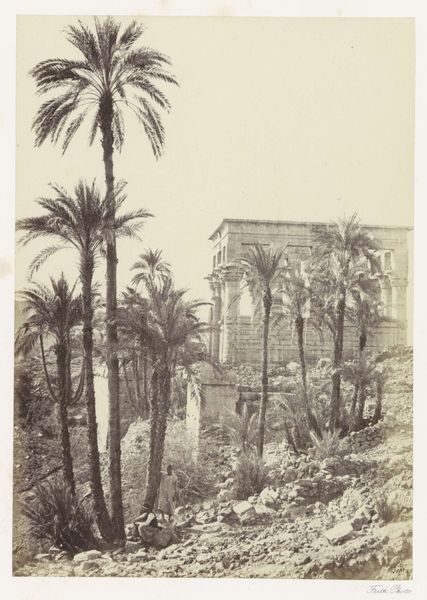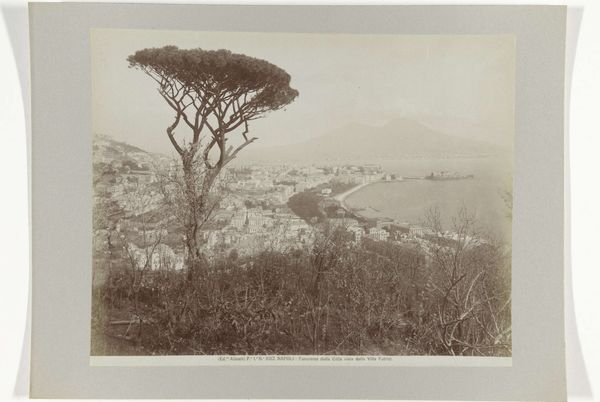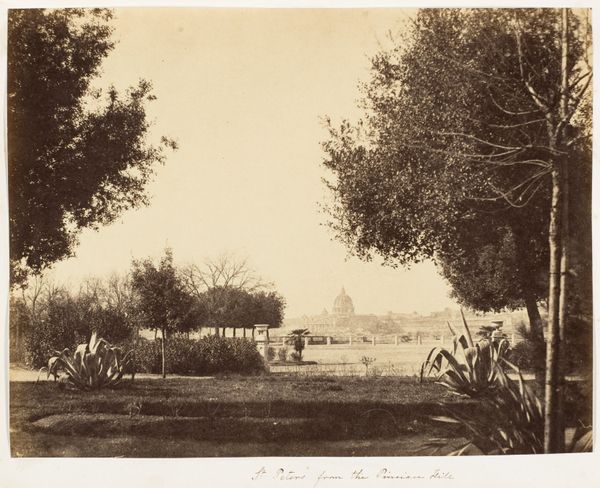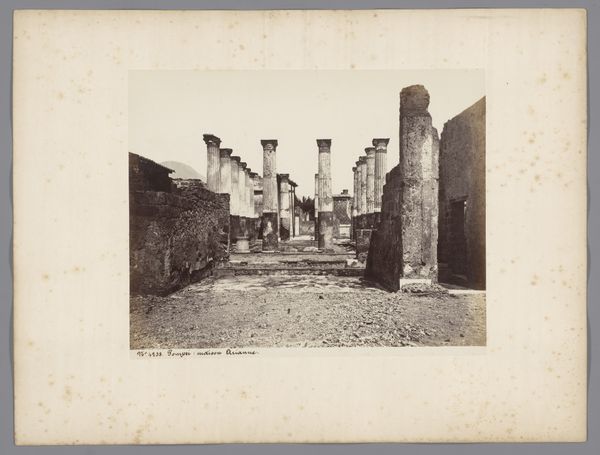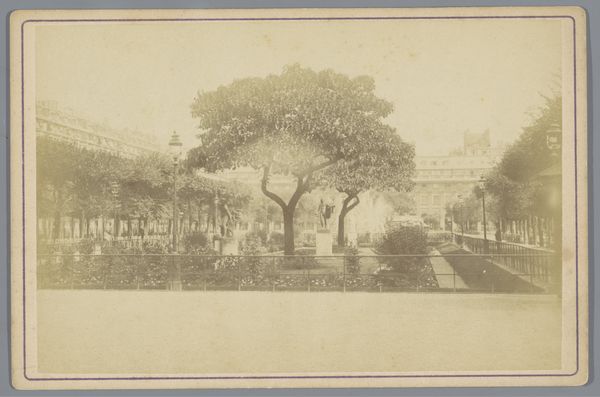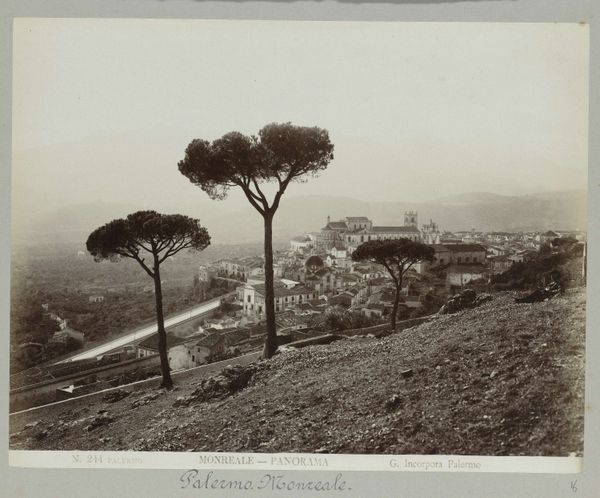![[Tree in Formal Garden Outside Palazzo] by Giacomo Caneva](/_next/image?url=https%3A%2F%2Fd2w8kbdekdi1gv.cloudfront.net%2FeyJidWNrZXQiOiAiYXJ0ZXJhLWltYWdlcy1idWNrZXQiLCAia2V5IjogImFydHdvcmtzLzBlYjA4NTc2LTc4MGQtNDNiMy1iNmNlLTU0ODg2NGUwNWQ1ZC8wZWIwODU3Ni03ODBkLTQzYjMtYjZjZS01NDg4NjRlMDVkNWRfZnVsbC5qcGciLCAiZWRpdHMiOiB7InJlc2l6ZSI6IHsid2lkdGgiOiAxOTIwLCAiaGVpZ2h0IjogMTkyMCwgImZpdCI6ICJpbnNpZGUifX19&w=3840&q=75)
[Tree in Formal Garden Outside Palazzo] 1860s - 1870s
0:00
0:00
plein-air, photography
#
tree
#
garden
#
outdoor environmental image
#
natural shape and form
#
16_19th-century
#
organic shape
#
plein-air
#
landscape
#
outdoor photography
#
photography
#
realism
#
building
Copyright: Public Domain
Editor: This photograph, "[Tree in Formal Garden Outside Palazzo]" by Giacomo Caneva, taken sometime between the 1860s and 1870s, shows a grand estate. What strikes me is the formal, almost industrial quality, despite depicting a natural scene. What are your initial thoughts on it? Curator: This image speaks volumes about the commodification of nature during the rise of industrial capitalism. Consider the materials used – the chemicals to develop this print, the paper itself, each a product of industry. The garden, once a symbol of aristocratic leisure, is now captured and reproduced, turning into a consumable image for the burgeoning middle class. Editor: So you see the act of photography itself as part of that industrial process? Curator: Precisely! Think about the labor involved: the photographer, the assistants, the darkroom technicians. These are all workers contributing to the creation and circulation of this image. Even the aesthetic – the carefully arranged composition – it’s all manufactured. How do you think this image would circulate in the economy of the time? Editor: Perhaps sold as prints to tourists, or reproduced in books… Making these gardens, previously only accessible to a privileged few, viewable to a much wider audience. It changes its inherent value, right? Curator: It absolutely changes its value. It shifts from a private luxury to a publicly consumable image, further blurring the lines between art, commerce, and social class. The very concept of 'nature' is being redefined through its representation and reproduction. It becomes another material in a capitalist system. Editor: I see it now! Thanks, this gives me a fresh perspective on how to view 19th-century landscapes. Curator: Glad I could help shed some light, seeing how an artwork's production and materiality inform its context can illuminate a whole new field of meaning.
Comments
No comments
Be the first to comment and join the conversation on the ultimate creative platform.
